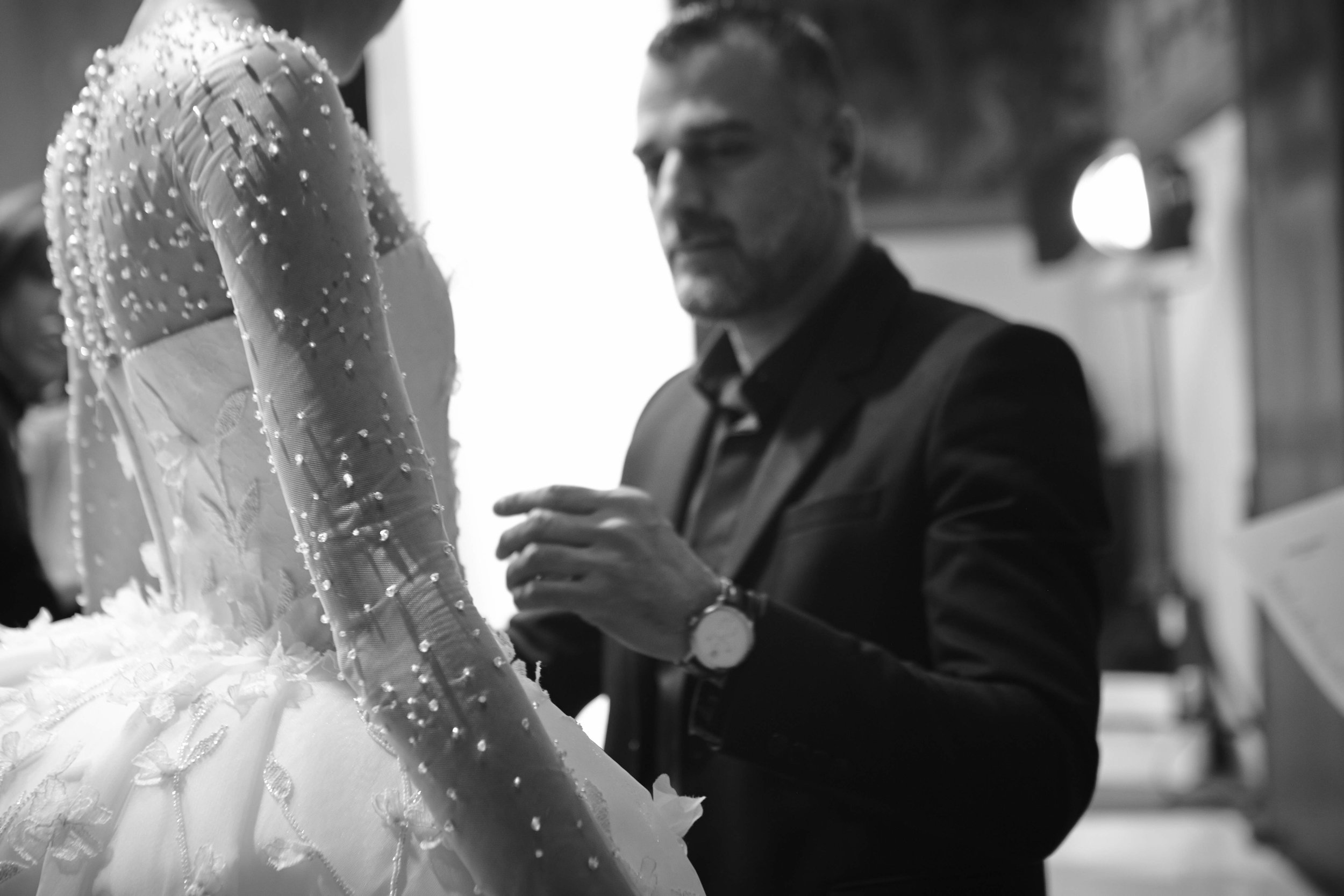An Interview with Georges Hobeika

Georges Hobeika’s time has come. At the Cannes Film Festival, French star Marion Cotillard was spotted wearing one of his brick-red sleeveless bodysuits embroidered with black sequins and pearls, teamed with a sophisticated turquoise pencil skirt while America Ferrera strolled the red carpet in one of his princess gowns with an exquisitely embroidered scalloped neckline and a bow fastened waist belt. In London, Elle Fanning chose one of his Couture strapless gowns in cream brocade silk with a flower motif beaded embellishment for a private party where costumes and props of her latest film ‘Malificent’ were being shown. These ladies followed in the footsteps of Eva Longoria and Julianne Hough who have been supporters of the designer for a few years now.
Ultra-feminine gowns with richly embellished details from crystal beadings to intricate embroideries and appliqués have long been the signature of Georges Hobeika, who will celebrates his maison’s 20th anniversary next year.
But in the past three years, with the launch of a ready–to-wear cocktail line (Georges Hobeika Signature) in 2010 and a classic daywear line (GH by Georges Hobeika) in 2012, the Lebanese designer’s couture offerings have evolved to take on a lighter and simpler “new couture” turn using new embroidery techniques. His last Spring/Summer 2014 couture collection, presented in Paris in January and titled “Silence is Golden,” included a sharply tailored white jumpsuit embellished with pearls, a pistachio couture ‘mini’ with flower embroideries that made an impressive statement, and dresses with small organza leaves finely embroidered to gently move with the wearer.
Hobeika studied civil engineering at university in Beirut, with a focus on architecture, but upon his graduation joined his mother’s boutique atelier putting his sketching abilities to good use. In 1994, he spent a year in Paris, interning with several fashion houses (including Chanel) before returning to Beirut to start his own small atelier with the support of his mother and a few skilled seamstresses. The company now employs over 100 people, and comprises various specialized workshops.
“When I first started I was mainly designing for clients in the Middle East, particularly in Saudi Arabia, and it was a certain style, as they tend to prefer more embellished pieces. Then when I started showing in Paris in 2001, my style started to evolve to cater to a more international clientele. My design evolved toward pieces that were simpler and lighter, even though I retained all the embroideries,” he explained in an interview.
“There is always a lot of research and craftsmanship in every design and a very feminine cut, but also now a certain simplicity and effortless elegance.” he added.
Hobeika, who can sew well and creates his own patterns, says that each collection is created around a theme and starts with researching fabrics and then playing with them, molding them on a mannequin. “I do sketch a lot, all the time, but I love to mold the fabric on the model, I can spend a month on those, to try to see what the fabrics can do,” he explains.
\
Nature always plays an important role in each collection and can be found in his flower and leaf embroideries. Past collections have revolved around the orchid, the fleur de lys, or for his Spring/Summer 2014 couture collection, the more evocative theme of dawn and nature awakening, when he used crystals and pearls lightly on his fabrics to evoke dew drops on a flower petal.
The woman he designs for has a love of life, “she loves to laugh,” and he favors adorning her with romantic lace, flimsy organza, or crêpe layers.
Hobeika was in Singapore last week for a private gala, organized by the French Chamber of Commerce, where he presented a mini-retrospective of his couture collections, around a “red” theme. The rather shy couturier was focused on his upcoming Fall/Winter 2014 couture collection, which he will unveil in Paris in July, but was reluctant to discuss it in any detail.














